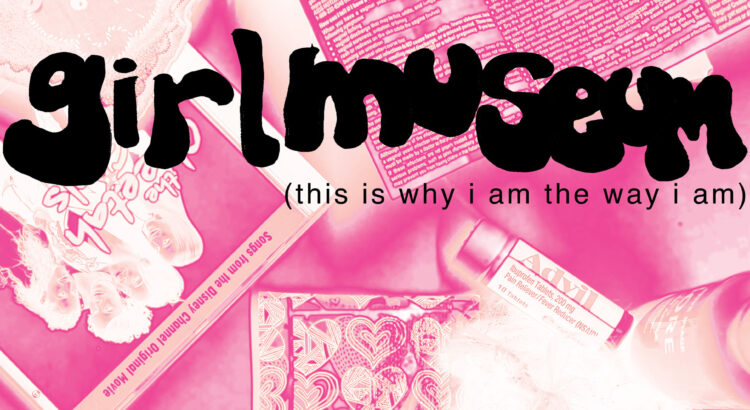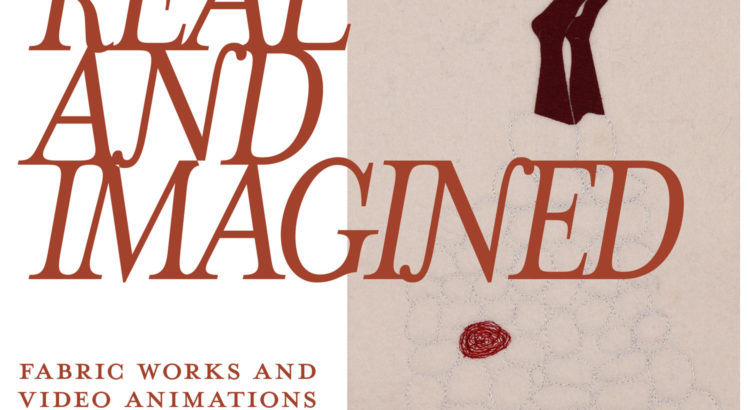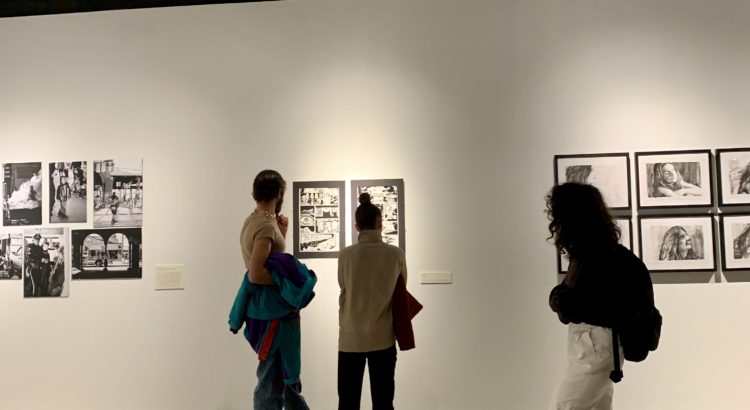On September 21st, from 4:30 to 7 p.m., the Stamps Gallery on Division St. hosted a student-led exhibition called “girlmuseum”. The exhibition is part of a class led by Andrew Thompson called “Gallery As Site for Social Change”, in which students collaborated to make multimedia projects for a temporary gallery space. Although many Stamps classes are collaboration-based and place emphasis on the power of interweaving imaginations and different perspectives, it’s not common to see these collaborations outside of the Stamps building. This work was also advertised a bit better than other Stamps exhibitions I’ve seen, as I received emails from faculty members and gathered flyers that showed off the exhibition’s nostalgic and girlish themes.
girlmuseum was located in the atrium of the Stamps Gallery; the small glass room created an atmosphere of openness and warmth, as the evening light bathed the pieces in color and enhanced details like dazzling embellishments and silky textures. The first thing I noticed was the coherent theme connecting all the pieces, all contained in a manageable space, while each piece still retained its own individuality and personal message. All the multimedia pieces acted as artifacts from girlhood, showcasing mementos from the pains, joys, and imaginative flairs of femininity. Bubbly pop music from the 2000s played as you walked through the gallery, creating a multisensory experience, and pieces were draped across the ceiling and tucked into corners to create a highly engaging space.
Two pieces that represented shrines of some sort flanked the entryway, and I found myself absorbed in the objects they held. Hannah Montana and One Direction CDs spoke to the nostalgia of my earliest childhood obsessions, and handmade wallets and beaded necklaces brought me back to a time of uninhibited creation when arts and crafts were ruled by bright colors and exploration instead of self-scrutiny. Some objects are seemingly more humorous or abstract in meaning than others, like a packet of silica gel hanging next to a patterned headband, and some carry dark or mature connotations, like objects referring to pregnancy and sexuality. I found myself connected to all of it, weaving together vague memories and nostalgic girlhood to create a full understanding of this somewhat universal experience for femme-presenting people.
Other pieces were more focused on modern social commentary, but their structure was still undeniably playful. A silk slip dress was bedazzled with cursive letters that read “I am made & remade continuously”, investigating the turbulence of having a feminine identity; multiple sculptural pieces were made from combinations of children’s figurines, fabrics, and found items, presenting miniature scenes that appear playfully absurd yet speak to age-old or brand-new ideas of gender. A banner draped across the ceiling— requiring that you crane your neck to even realize its presence— contrasts against the frills and fun of everything else, covered in all-too-common sayings that degrade, underestimate, or deny the worth and strength of girls.
girlmuseum was a testament to girlhood in all its glory and its suffering— from its excesses of glitter and playful creation to its paralyzing self-doubt. I was amazed by how interconnected the pieces were, all different enough to contribute a new dimension to the overall theme. This exhibition made me so much more excited for future Stamps exhibitions, and I especially hope to see more collaborative exhibitions in the near future. I recommend checking out the Stamps Gallery on Division St. whenever you are able— regardless of what they’re showing, it is always incredible to see the diverse talent of students, faculty, and professional artists.














